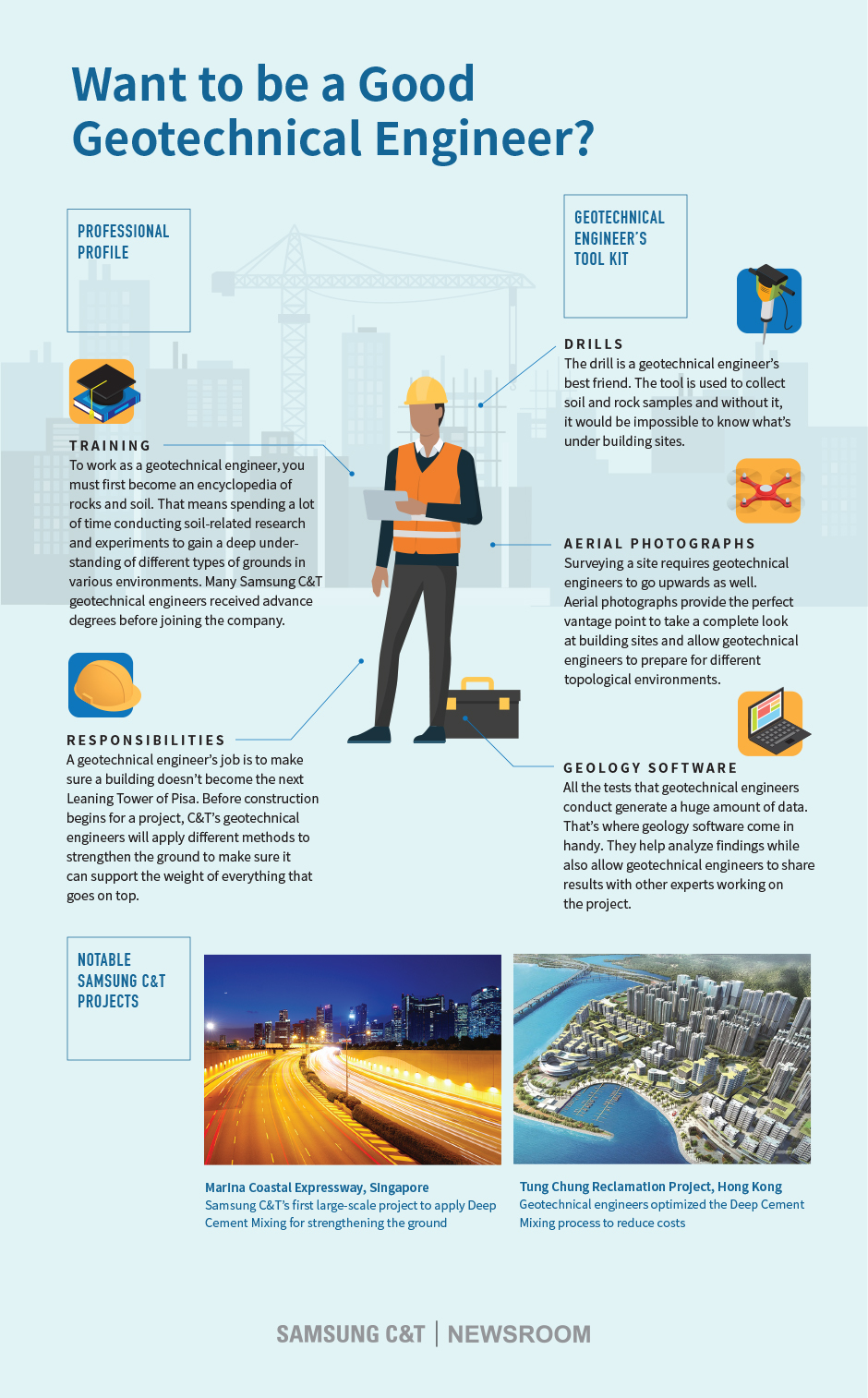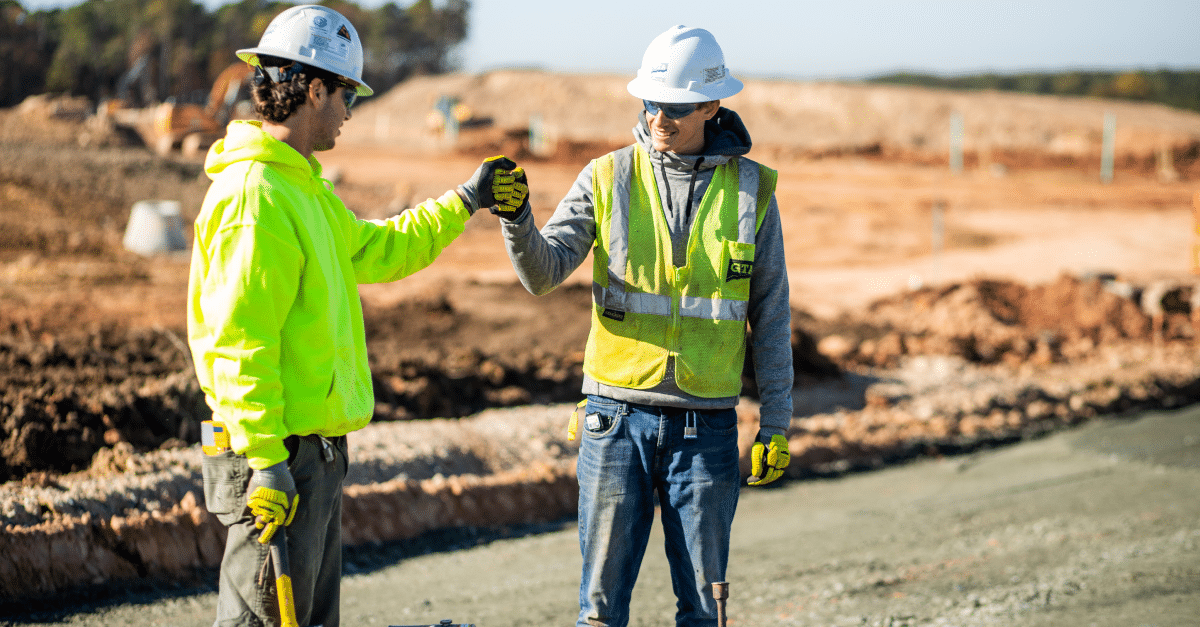Getting The Geotechnical Engineering For Construction Projects To Work
Getting The Geotechnical Engineering For Construction Projects To Work
Blog Article
Facts About Geotechnical Engineering For Construction Projects Uncovered
Table of ContentsThe Ultimate Guide To Geotechnical Engineering For Construction ProjectsAll about Geotechnical Engineering For Construction ProjectsThe Definitive Guide for Geotechnical Engineering For Construction ProjectsA Biased View of Geotechnical Engineering For Construction ProjectsSome Known Incorrect Statements About Geotechnical Engineering For Construction Projects Examine This Report about Geotechnical Engineering For Construction ProjectsExcitement About Geotechnical Engineering For Construction Projects
and Kovacs, W. (1981 ), An Intro to Geotechnical Design, Prentice-Hall, Inc. Deep Scan Technology (2023 ): Deep Scan Tech uncovers surprise frameworks at the website of Denmark's tallest structure. "Geofrost Coring". GEOFROST. Retrieved 20 November 2020. Han, Jie (2015 ). Concepts and Method of Ground Renovation. Wiley. ISBN 9781118421307. RAJU, V. R.Ground Renovation Technologies and Situation Histories. Singapore: Research Study Posting Services. p. 809. ISBN978-981-08-3124-0. Ground Enhancement Principles And Applications In Asia. Pariseau, William G. (2011 ). Style evaluation in rock mechanics. CRC Press. Hegde, A.M. and Palsule P (Geotechnical Engineering for Construction Projects).S. (2020 ), Efficiency of Geosynthetics Reinforced Subgrade Subjected to Repetitive Lorry Loads: Speculative and Numerical Research Studies.
Cengage Knowing, Stamford, 666 p. Atkinson, J., 2007. The mechanics of soils and foundations. Taylor & Francis, N.Y., 442 p. Drifting Offshore Wind Wind Turbines: Actions in a Sea state Pareto Ideal Layouts and Economic Analysis, P. Sclavounos et al., October 2007. Nicholson, D, Tse, C and Cent, C. (1999 ). The Observational Method in ground engineering principles and applications.
Not known Details About Geotechnical Engineering For Construction Projects
Laboratory and area screening plays a critical function in this process. By extracting samples from the earth's subsurface and using a collection of tests, geotechnical designers can predict the behavior of dirt layers and review their suitability for various construction efforts. The essence of geotechnical engineering in civil engineering can not be overstated, attributable to numerous aspects: The initial action in any type of geotechnical research includes establishing the dirt kind at the construction site.
Recognizing these characteristics guarantees that just ideal soil types are selected for the growth, therefore avoiding prospective structural failures. The structure works as the bedrock of any type of construction project. Selecting the appropriate foundation type is a decision that hinges on the comprehensive analysis supplied by geotechnical engineering. This guarantees the long life and security of frameworks by accommodating the lots they will bear.

Geotechnical site examination is an important step in the planning and implementation of any building project. It entails the collection and evaluation of data connected to the physical residential properties of soil and rock beneath a recommended building site. This information is vital for the style and construction of safe, secure, and lasting structures.
The Greatest Guide To Geotechnical Engineering For Construction Projects
, likewise recognized as subsurface expedition, involves a series of activities aimed at establishing the soil, rock, and groundwater conditions at a building website. The main goals are to recognize potential geotechnical risks, evaluate the engineering residential or commercial properties of subsurface products, and supply referrals for the style and building and construction of structures, maintaining walls, and other structures.
The workdesk research assists in determining potential geotechnical concerns and intending the subsequent fieldwork. This involves observing the topography, water drainage patterns, existing frameworks, greenery, and any kind of indications of instability or disintegration.
7 Simple Techniques For Geotechnical Engineering For Construction Projects
Superficial examination pits are excavated to straight observe and sample the dirt and rock. This approach works for examining the top layers of the subsurface and identifying near-surface dangers. Non-invasive geophysical methods, such as seismic refraction, ground-penetrating radar (GPR), and electrical resistivity tomography (ERT), are used to map subsurface conditions and identify anomalies.
Dirt and rock examples collected during the field examination are subjected to research laboratory testing to identify their physical and mechanical homes. These tests supply necessary information for geotechnical analysis and layout.
The key advantage of geotechnical website examination is guaranteeing the safety and stability of frameworks. By recognizing the subsurface problems, designers can make structures and other structural aspects that can stand up to the tons and ecological forces they will go through. This reduces the risk of negotiation, decrease, and structural failure.
Geotechnical Engineering For Construction Projects Things To Know Before You Get This
For instance, understanding soil qualities can lead the choice of excavation strategies, dewatering methods, and ground enhancement steps. This guarantees reliable and risk-free construction methods. Geotechnical website examinations are frequently called for by developing codes and laws. Abiding by these demands ensures compliance with lawful and safety and security standards, preventing potential lawful liabilities and job hold-ups.
This info is vital for task managers, designers, and contractors in developing reasonable schedules, spending plans, and contingency plans. Geotechnical Engineering for Construction Projects. Skyscraper in a Coastal AreaIn a seaside city, a high-rise domestic building was intended check these guys out on a site with suspected loosened sand deposits and a high water table. A comprehensive geotechnical investigation, including borehole boring, CPT, and geophysical studies, was performed
How Geotechnical Engineering For Construction Projects can Save You Time, Stress, and Money.
Based upon these findings, the structure design was changed to consist of deep heap structures prolonging into stable strata, and ground improvement strategies, such as vibro-compaction, were implemented to alleviate liquefaction dangers. This proactive technique made certain the safety and security and stability of the structure while preventing pricey post-construction removal. Framework Development on a Sloping click here for more TerrainA significant infrastructure project, entailing the construction of a highway and bridges, was intended on an uneven surface with steep inclines.

The Leaning Tower of Pisa (Italy), a renowned building marvel, is infamous for its unintentional tilt from considerable geotechnical problems. The tower's structure was improperly created to manage the soft, unsteady dirt under it, bring about uneven negotiation and its distinctive lean. Our world is dotted with excellent infrastructure projectsfrom towering skyscrapers to stretching bridgesall standing testament to the development of the different building and construction devices and methods readily available.
Geotechnical engineering is a specialized area within civil engineering that focuses on examining the habits of earth materials. This branch digs deep right into the groundinvestigating exactly how the dirt, rock, and groundwater at a construction website can influenceand be influenced bythe facilities that we erect on and right into them. Prior to a solitary block is laid or a concrete foundation poured, geotechnical engineers probe right into the earthgathering essential data about the site's soil composition, rock structure, and groundwater degrees.
Geotechnical Engineering For Construction Projects - An Overview

is a tool utilized to analyze the honesty and load-bearing ability of heaps throughout setup, leveraging the principle of wave propagation. It optimizes construction efficiency by providing real-time assessments, therefore making sure risk-free and effective pile structures. Among the useful applications of geotechnical engineering involves determining and implementing the best techniques for foundation building and construction.
Stack driving represents greater than the simple act of placing structural elements right into the ground. On the contrary, it is a meticulously managed procedure of transferring a framework's tons past the less stable dirt layers better to the surfacedown to the much more substantial strata that exist underneath. In the instance of pile driving, consider just how geotechnical engineers expertly utilize this technique to equally distribute the framework's weight.
Report this page